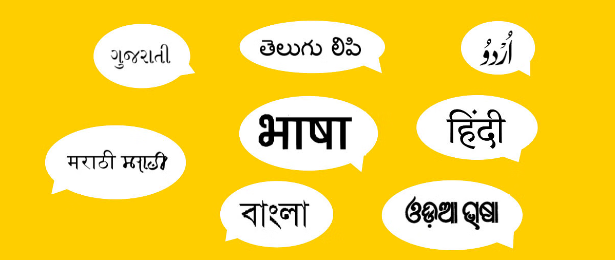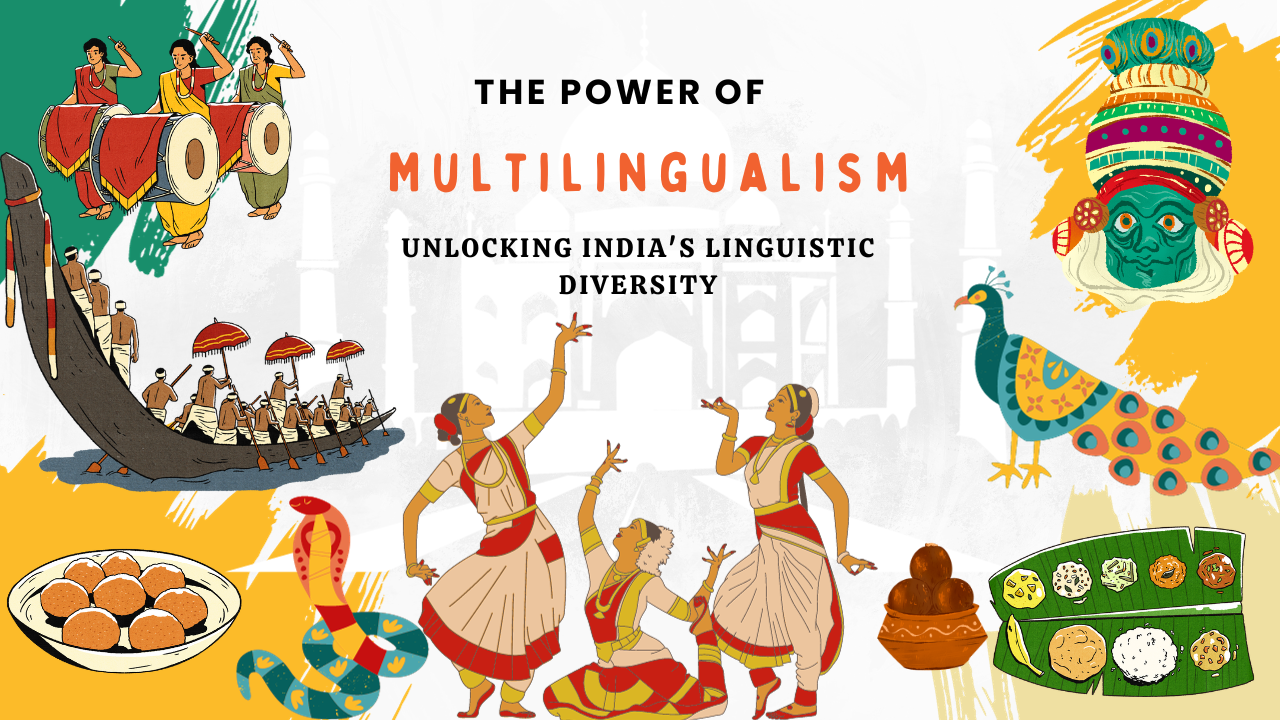India is one of the world’s most linguistically varied nations, with over 121 languages and 263 dialects spoken across the country. This variety provides enormous cultural depth and power, but it also poses certain disadvantages. One of the most difficult problems is ensuring that all Indians, regardless of linguistic background, have access to education and opportunity.

The capacity to speak and comprehend numerous languages is referred to as multilingualism. It is a vital talent that may help both people and civilizations. individuals who are multilingual are better suited to interact with individuals from other cultures and have access to a broader variety of knowledge and services. Multilingualism has been shown to increase cognitive function and academic success.
Multilingualism has the ability to unleash India’s linguistic variety and enjoy the many advantages that come with it. Multilingualism has the potential to increase education, social cohesion, and economic prosperity.
Education
One of the most serious problems in India’s education system is a lack of access to high-quality education in all languages. Many Indian youngsters attend schools where the teaching language is not their native tongue. This might make learning and succeeding difficult for them.
Multilingual education may assist to alleviate this issue by allowing students to study in their native language. This may result in greater academic achievement, lower dropout rates, and more children having access to school.
For example, the Indian state of Sikkim has successfully adopted a multilingual education strategy. Up to the basic level, all children in Sikkim are taught in their mother language. This has resulted in considerable gains in educational achievements for all students, regardless of linguistic background.
Also Read: Top 7 Reasons Why You Need App Localization?
Social Cohesion
Multilingualism may also enhance social cohesiveness and understanding among India’s many cultural groupings. People are more likely to feel appreciated and valued when they can speak with one other in their native language. This may assist to minimize prejudice and discrimination while also strengthening interactions between various cultures.

In Hyderabad, India, for example, there is a sizable Telugu-speaking community as well as a sizable Urdu-speaking population. Historically, the two communities have been split, but there has been a rising push in recent years to foster multilingualism and cultural understanding between the two groups.
Code-switching is one method for doing this. The technique of switching between languages within the same discourse is known as code-switching. People in Hyderabad often switch between Telugu and Urdu depending on who they are speaking with. This contributes to a more inclusive and inviting atmosphere for everybody.
Economic Growth
Multilingualism may also help India’s economy thrive. People who are multilingual are better able to operate in globalized enterprises and engage with consumers and partners from all over the globe. They also have more access to knowledge and resources, which may assist them in innovating and developing new firms.
The Indian IT business, for example, is one of the biggest in the world, and multilingualism is a critical ability for employees in this field. Indian IT firms can compete in the global market because its staff is fluent in numerous languages, including English, Hindi, and other Indian dialects.
Challenges
Despite the many advantages of multilingualism, there are certain issues that must be addressed in India. One difficulty is a lack of understanding about the value of multilingualism. Many Indians feel that their children should only learn English and that other languages are unnecessary. This is a misunderstanding that must be remedied.
Another issue is a scarcity of resources for multilingual education. There is a scarcity of skilled instructors who can teach in several languages, as well as textbooks and other educational resources in various Indian languages.
Additional Benefits of Multilingualism
Aside from the benefits described above, multilingualism provides several more advantages for people and society. Multilingual individuals, for example, excel at multitasking, paying attention, and problem solving. They are also more inventive and tolerant to uncertainty.
Multilingualism may also aid in the preservation of cultural heritage. People who speak and comprehend numerous languages may access and convey cultural information and traditions that would otherwise be unavailable in other languages.

Recommendations
Here are some recommendations for how to promote multilingualism in India:
- Invest in multilingual education – The Indian government should increase financing for multilingual education initiatives and multilingual teacher training. In addition, it should create and disseminate textbooks and other educational resources in all Indian languages.
- Promote multilingualism in the workplace – The government and enterprises should promote the use of several languages in the workplace. This may be accomplished by providing staff with multilingual training and by fostering a work atmosphere in which employees are free to talk and write in their chosen languages.
- Support the use of multilingual media – The government and commercial media organizations should create and disseminate material in a variety of languages. This will assist to increase public awareness of multilingualism.
- Raise awareness about the benefits of multilingualism – The government and other stakeholders should promote awareness of the advantages of multilingualism for people and society. This may be accomplished via public awareness campaigns and the promotion of multilingual role models.
Here are some additional recommendations:
- Encourage code-switching – Code switching is the practice of changing languages within the same discourse. It is a natural and widespread behavior among multilingual individuals, and it may assist to create a more inviting and inclusive workplace for everybody.
- Support multilingual communities – The government and other stakeholders should help multilingual communities by providing them with resources and services in their native tongues. Multilingual libraries, community centers, and social services are examples of such facilities.
- Celebrate India’s linguistic diversity – As a source of pride and strength, India should celebrate its linguistic diversity. This may be accomplished via festivals, cultural events, and other programs that raise awareness and respect for India’s many languages.
Conclusion
Multilingualism is a potent instrument that may assist India in unlocking its linguistic variety and reaping the many advantages that come with it. Multilingualism may benefit education, social cohesion, and economic prosperity.
To guarantee that all Indians have the chance to learn and benefit from multilingualism, the Indian government and other stakeholders must invest in multilingual education and awareness.



